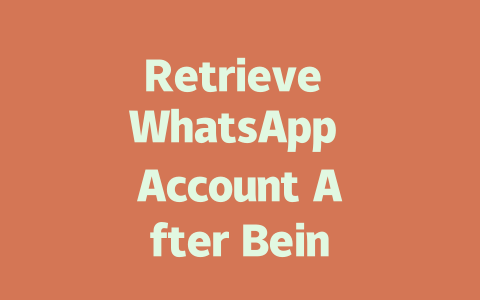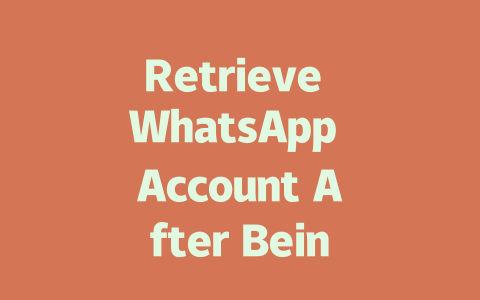You ever feel like you’re constantly bombarded with news updates but don’t know where to focus? I’ve been there. You scroll through your social feeds, check different websites, and still end up missing out on key events. Here’s a simple method I’ve tested over time to help you stay informed without feeling overwhelmed. No fancy tools or jargon—just practical steps that work.
Finding Reliable Sources of Latest News
One of the biggest challenges in today’s digital world is separating reliable news from misinformation. Think about it: when you search for “latest news,” how do you decide which sites to trust? Over the years, I’ve learned that picking credible sources isn’t as hard as it seems if you follow some basic principles.
Why Source Selection Matters
When I started following the news more closely last year, I realized not all websites are created equal. Some prioritize sensational headlines to grab clicks, while others stick to facts. For instance, I once clicked on an article promising breaking news only to find no credible references or author details. To avoid wasting time on unreliable content, I now look for sites that align with these criteria:
A good rule of thumb I use is this: if a piece of news sounds too extreme or unbelievable, chances are it needs double-checking. Google’s official guidelines emphasize the importance of sourcing quality content because their robots recognize trustworthy domains better.
Tools That Can Help
To make life easier, there are plenty of apps and extensions designed to filter out fake news. One tool I swear by is called “NewsGuard” (you can add it to your browser). It assigns ratings based on reliability, so even before clicking a link, you get a quick snapshot of whether the source is legit. Another option is subscribing directly to trusted newsletters. Many journalists offer free daily updates tailored to specific topics like politics, technology, or business.
Crafting Effective Search Queries for Latest News
Once you’ve shortlisted reliable sources, the next step is figuring out what to actually search for. Let me tell you something interesting—I used to waste hours typing random phrases into Google until I discovered a smarter way. Instead of broad terms like “world news,” try narrowing down your queries using long-tail keywords.
Examples of Smart Searches
Imagine you want to know the latest developments in climate change. Instead of just searching “climate change,” structure your query like this:
These specific searches yield much better results because they tap into content meaning’s association. In other words, Google’s search bots will match your intent more accurately when you include relevant terms. Plus, adding a timeframe helps weed out outdated articles.
Here’s another trick I picked up: Use filters within search engines. Most platforms allow you to sort results by date, region, or type (articles, videos, etc.). By combining smart queries with filters, you significantly enhance your chances of finding fresh, pertinent information.
Common Mistakes to Avoid
Something I see people do often is relying solely on trending hashtags. While social media can be useful, it’s not always reliable. Case in point: during election cycles, hashtags frequently go viral due to manipulation rather than genuine news value. Stick to official channels whenever possible.
Also, avoid falling into confirmation bias traps. Just because a headline supports your existing beliefs doesn’t mean it’s accurate. Always read critically and cross-check facts.
Organizing Your News Consumption Routine
Now comes the fun part—building habits that keep you updated consistently. Based on my own experience helping friends manage their news intake, here’s a breakdown of actionable tips.
Set Daily Limits
Too much information can lead to fatigue. Personally, I allocate 30 minutes each morning for reading top headlines and another 15 minutes at night for deeper dives. Beyond that, I silence notifications unless absolutely necessary. This keeps me engaged without drowning in data.
Create a Focused List
Make a list of essential categories you care about most. Maybe it’s global economics, health innovations, or entertainment gossip. Tailoring your focus ensures you spend time wisely. Below is a sample table I made for myself to organize priorities:
| Category | Preferred Sources | Frequency | Key Keywords |
|---|---|---|---|
| Technology | TechCrunch, Wired | Daily | AI breakthroughs, cybersecurity |
| Politics | The Guardian, Politico | Weekly | Election updates, trade agreements |
| Science | Nature, Science Daily | Bi-weekly | Medical studies, space exploration |
This table acts as a blueprint, ensuring I cover all bases systematically.
So there you have it—a straightforward yet effective approach to staying on top of the latest news. Remember, consistency is key. And hey, if you give these methods a shot, drop me a note letting me know how it goes!
If you’re in a situation where you’ve completely forgotten your WhatsApp password after getting hacked, don’t panic. The good news is that WhatsApp has got your back with a straightforward solution. You can reset your password by confirming your identity through the phone number linked to your account. This works by sending a verification code either via an SMS message or a voice call. It’s designed this way so only the real owner of the phone number can regain control. So even if you’re locked out, as long as you have access to the phone number, you’ll be able to get back into your account without too much trouble.
When it comes to retrieving messages that might have been lost during the hacking incident, it really boils down to how well you’ve set up your backups. If you use cloud storage like Google Drive for Android users or iCloud for iOS, then you’re in luck. After regaining access to your account, you can restore your chat history from these backups. But here’s the catch—make sure your backups include chats from at least 5-12 months ago. That gives you the best chance of recovering everything important. Without proper backups, those messages may be gone forever, which is why staying on top of regular updates is essential. It’s not just about protecting your account; it’s also about making sure your conversations are safe no matter what happens.
FAQs
# What happens if I can’t remember my WhatsApp password after being hacked?
If you cannot remember your password, don’t worry. WhatsApp allows you to reset your password by verifying your phone number through a confirmation code sent via SMS or voice call. This process ensures that only the rightful owner of the number can regain access.
# Can I retrieve messages lost during the hacking incident?
Yes, but it depends on your backup settings. If you’ve enabled cloud backups (Google Drive for Android or iCloud for iOS), you can restore your chat history after regaining access to your account. Ensure that backups include messages from 5-12 months prior for maximum recovery.
# Is two-factor authentication (2FA) enough to prevent future hacks?
Two-factor authentication adds an extra layer of security and is highly recommended. However, it’s not foolproof. Combining 2FA with strong passwords and avoiding suspicious links reduces the risk significantly. Always keep your app updated for the latest security patches.
# How long does it take to recover my WhatsApp account?
The recovery process typically takes 10-20 minutes if you follow the steps correctly. This includes verifying your identity, resetting your password, and re-downloading the app. Delays may occur if your phone number isn’t recognized immediately due to server issues.
# Will hackers still have access to my account after I reclaim it?
No, once you successfully recover your account, previous unauthorized access should be terminated. It’s crucial to change any associated passwords and enable 2FA immediately afterward to ensure complete protection against further breaches.




